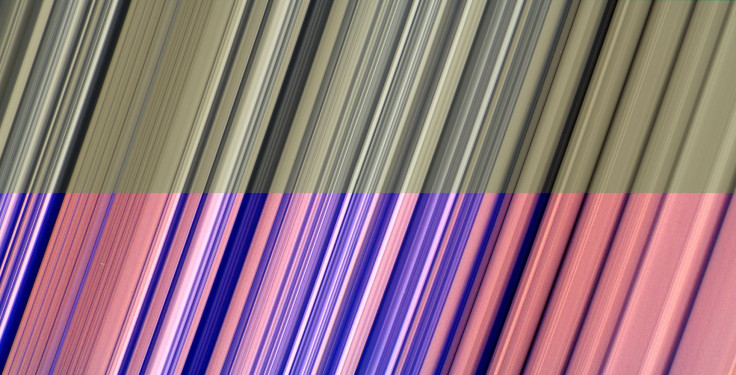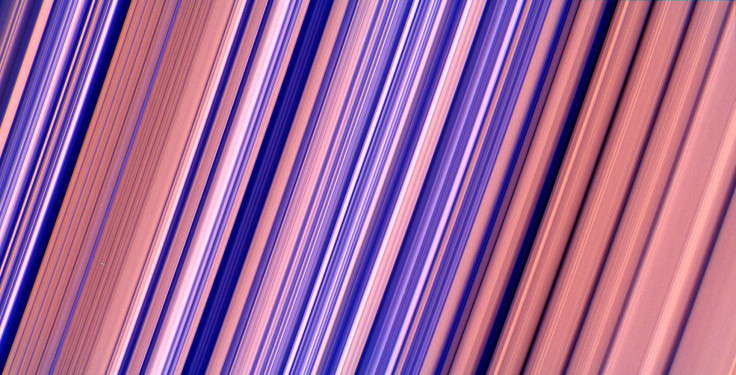Cassini Saturn Images: See Incredibly Detailed Photos Of Saturn's Rings

The Cassini spacecraft is making its final passes through the rings of Saturn before it takes its grand finale plunge in just one week. The nearly 20-year mission will come to a fiery end when Cassini plunges into Saturn’s atmosphere next Friday morning and burns up, effectively ending the mission forever.
But before the craft performs its final act of science, it’s been completing several loops of the rings of Saturn. That science would have never been possible without the finale orchestrated the way it has been. So far it’s resulted in some stunning images of Saturn, some of which NASA released Thursday.
NASA released the highest resolution photos ever taken of any part of Saturn’s rings. The photo was taken on July 6, with the narrow angle camera on the Cassini craft from the sunlit side of the rings. It was taken from about 47,000 miles from the ring and each pixel represents roughly two miles.
The photo is a mosaic of two images of a region of the B ring between 61,300 and 65,600 miles from Saturn’s core, according to NASA. The image below is a natural color composite that was taken using red, green and blue spectral filters. Scientists aren’t really sure what gives the ring its coloring because based on the fact that the ring is mostly icy water it should just appear white.

The B ring has an irregular structure that is where the ringlets are in the photo. The radio occulations show that these ringlets have sharp boundaries that get fuzzier, more round and less opaque the closer they are to the planet, NASA found. The small ringlets in the center are actually large, about 25 miles wide, while the larger looking bands are 200 to 300 miles wide.

A color-enhanced version of the photo that appears in blue and red colors shows the spectrum of visible wavelengths in the ring. The blue color actually indicates where the spectrum at visible wavelength is less red while the red color shows where the wavelength is more red. Other images that were taken with a spectral filter that is sensitive to absorption of light by water ice show that the redder areas are the ones with more icy water.
To show the color enhanced and regular photo, NASA created a side by side image of the two so that they are easier to compare.
© Copyright IBTimes 2024. All rights reserved.





















